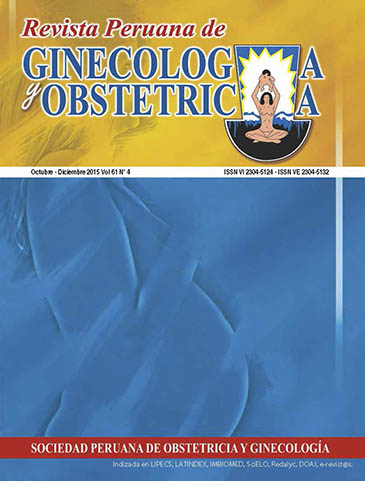Maternal and perinatal outcome with labor analgesia
DOI:
https://doi.org/10.31403/rpgo.v61i1866Abstract
Objectives: To determine maternal and perinatal outcomes of intrapartum analgesia. Design: Observational, descriptive, case-control study. Setting: Obstetrics and Gynecology Department, Hospital Docente Madre Niño San Bartolomé, Lima, Peru. Participants: Women in labor. Methods: Four hundred medical charts from pregnant women in labor (Group I= controls; Group II= cases) attended between September and December 2013 were reviewed. Main outcome measures: Maternal and perinatal outcomes. Results: Mean age of control group was 24.2 +/-3.5 years. Mean weight was 72.3 +/- 3.7 kg, and mean gestational age 38.6 +/- 1.2 weeks. Pain decreased with significance 30 minutes following analgesia (p < 0.01) in the cases group and lasted until the end of dilatation. Mean complete dilatation time for the control group was 233 +/- 28.7 minutes and 200.9 +/- 29.5 for the cases group with statistical significant minor difference. Length of the expulsive period for the control group was 23.3 +/- 5.3 compared to the cases group time of 27.5 +/- 3.6, with statistical significant major difference for the last group. Conclusions: Bupivacaine-Fentanil intrapartum analgesia was an effective method for pain relief during delivery when appropriately administered (dilatation 4 cm or over), shortening duration significantly and not interfering with the pushing reflex. The second stage was longer but did not have implications on neonates or increased operative vaginal delivery or cesarean section rate.Downloads
Download data is not yet available.
Downloads
Published
2016-01-16
How to Cite
Castillo Casiano, F. C., Rojas Martínez, F., & Danz Del Pozo, J. E. (2016). Maternal and perinatal outcome with labor analgesia. The Peruvian Journal of Gynecology and Obstetrics, 61(4), 363–368. https://doi.org/10.31403/rpgo.v61i1866
Issue
Section
Artículos Originales
















